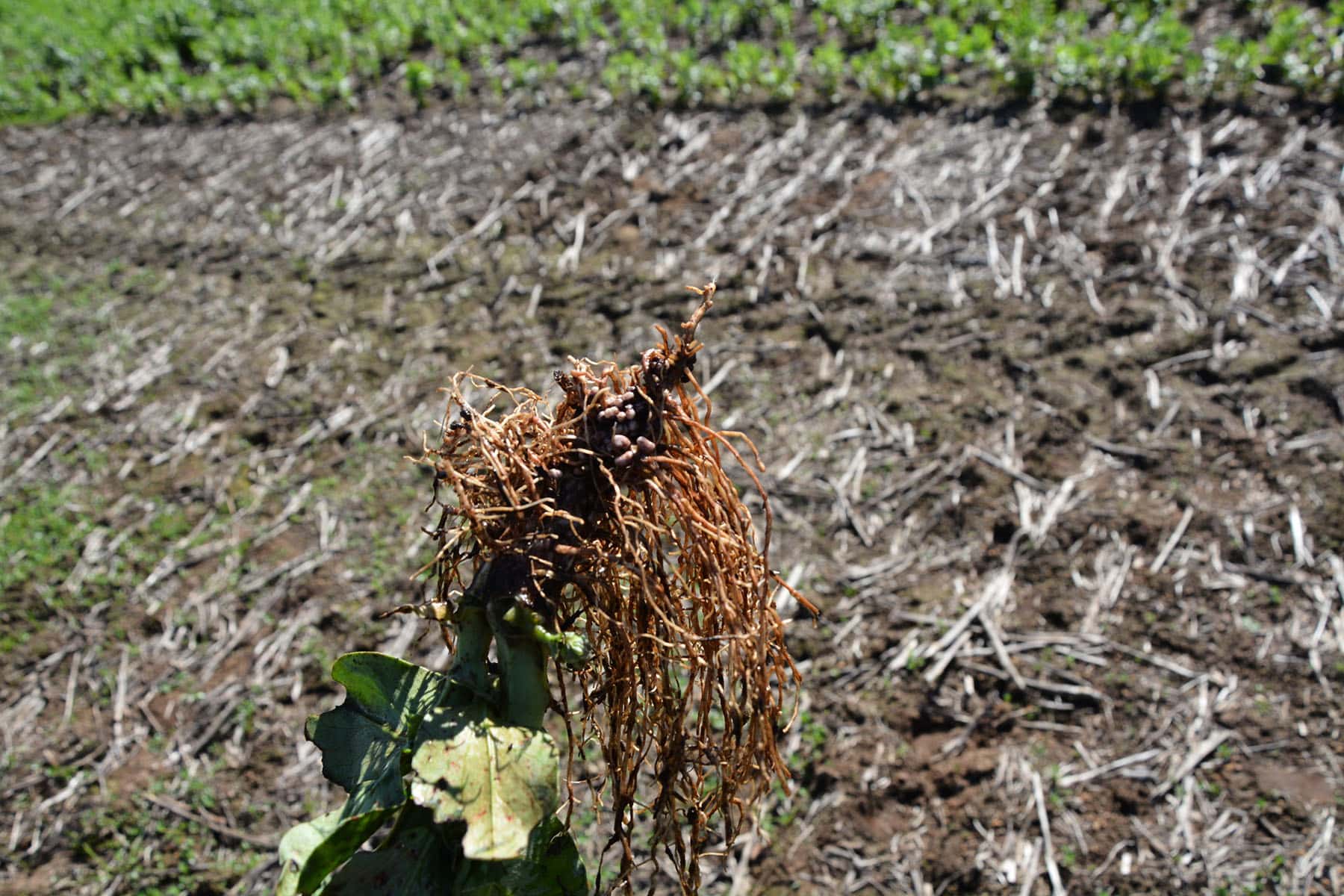START
FINISH

Summary
The nitrogen fixation abilities of sub clover, field peas, faba beans and lupins grown in trial plots on Kangaroo Island were assessed over three growing seasons.
The legumes all performed similarly, bestowing an average 86kg/ha of nitrogen (equivalent to 187kg/ha of urea) to the subsequent canola crop for a 1t/ha average yield increase. Soil moisture monitoring also revealed that the linseed control extracted more water, and to greater depth, than faba beans, canola or oats. This data provides greater clarity for growers planning legume rotations.
Background
It is well known that legume rotations make an important contribution to soil nitrogen levels, helping to increase subsequent crop biomass and yields. In the high rainfall environment of Kangaroo Island, knowing whether certain legume crops are more effective at fixing nitrogen and/or more efficient users of soil moisture would help growers to minimise input costs and maximise yields for the seasons following a legume rotation.
Research Aims
The core objectives of the project were to:
- Determine any differences between the nitrogen fixing and capturing ability of the main legume species commonly grown in the area.
- Establish how many following crops a legume rotation provided extra nitrogen to.
- Determine how much nitrogen was lost through leaching or denitrification (not achieved due to limited resources).
In The Field
The trial sites were located in the MacGillivray district of Kangaroo Island and the typical sandy loam over clay soil was limed shortly before planting. Soil testing at a depth of 0-10cm revealed a pH(CaCL) of 6.1.
Soil moisture probes linked to a weather station were used to log conditions, while a Hydra Probe was used to measure ion content, soil temperature and soil moisture, and to track nitrate movement through the 80cm soil profile.
Four common legume crops – faba beans, peas, lupins and sub-clover – were planted in 2016, along with a linseed control. Canola was planted on these trial plots in 2017, followed by oats in 2018. Yield data was not recorded for the oats, due to strong winds lodging the crop and preventing harvest.
By the start of the 2017 season, all four legume plots were found to have significantly higher starting nitrogen levels than the linseed control plot, inferring the legumes all fixed more nitrogen during 2016.
Canola planted in 2017 was given 106kg/ha of nitrogen as in-crop fertiliser. Assuming an efficiency of 50 per cent, the canola received 53kg/ha of nitrogen from this application. Using a requirement of 80kg/ha of nitrogen to grow 1 tonne of canola, nitrogen for the total yield could be calculated and reduced by 53kg/ha to work out the amount of nitrogen drawn from the soil.
Comparing yields between canola planted into legume and linseed stubbles allowed the researchers to calculate how much nitrogen had been added to the soil nitrogen pool by each preceding crop.
The measurements of canola grain yield, biomass and oat grain protein from 2017 and 2018 seasons (Table 1) showed a fairly even response to legume rotations and a notable improvement in soil nitrogen compared to the linseed control.
| 2016 crop | 2017 canola (t/ha) | 2018 biomass N (kg/ha) | 2018 oat grain protein |
| Linseed | 2.16b | 92a | 11.15a |
| Faba beans | 3.13a | 104a | 11.85a |
| Peas | 3.63a | 100a | 11.70a |
| Lupins | 3.13a | 108a | 12.05a |
| Sub clover | 3.04a | 108a | 11.80a |
Table 1. Grain yield, N uptake and quality
Results
Over three growing seasons, these trials established that beans, peas, lupins and sub clover were all equally effective at fixing nitrogen. Each added around 86kg/ha of nitrogen to the soil on average, leading to a yield advantage of 1t/ha in canola the following year.
The nitrogen residual effect was only found to persist for one year. Soil moisture probes showed these four commonly grown legumes also share similar rates of water use efficiency.
It was also observed that the linseed control crop was able to dry a soil profile in a decile 10 season (812mm rainfall), which may be useful knowledge for growers needing to dry saturated soils or manage a slug population.
Project Participants
Agriculture Kangaroo Island: Jenny Stanton
Landowner: Will Stanton
Soil Moisture Probes: Leighton Wilksch
Year 12 work experience: Ella Putland
The Problem
Kangaroo Island broadacre growers lacked comparative data on the nitrogen fixing capabilities and water use efficiency of commonly grown legume crops, which could help them optimise their choices for legume rotations.
The research
Four popular legumes – sub clover, field peas, faba beans and lupins – were monitored across three seasons using soil moisture and soil water nitrate monitoring, with linseed as a control crop.
More information
Janny Stanton, Agriculture Kangaroo Island
T: 0484 602 946
E: [email protected]
https://www.agki.com.au/
Value for Growers
Grain growers on Kangaroo Island now have quantified data to confirm that commonly grown legume species fixate similar amounts of nitrogen. This means they can better manage nitrogen input costs and consider other factors when planning legume rotations.
Latest Research Projects






